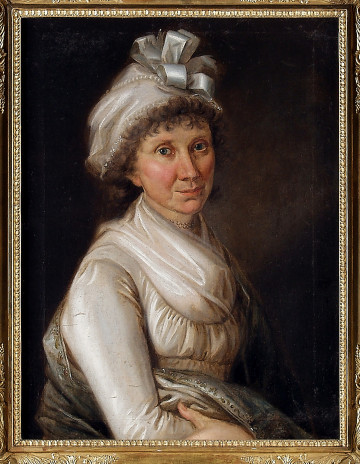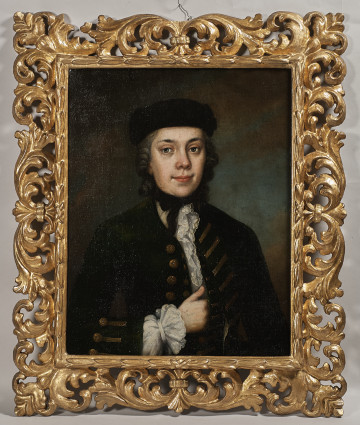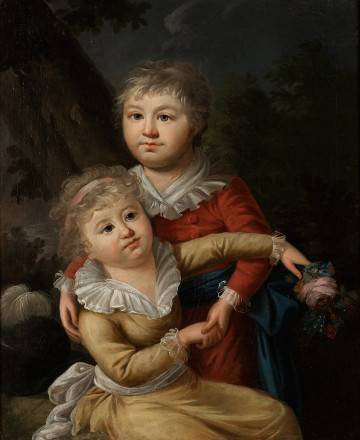
Portrait of Aleksandra Potocka, née Lubomirska
2nd half of the 19th century
Castle Museum in Łańcut
Part of the collection: History of the city and the region
Carbide (acetylene) lamp used as a bicycle light. It dates back to the beginning of the 20th century and is associated with the surge of popularity of bicycles on the streets of Łańcut. The popularity of this mode of transport led to the introduction of special traffic regulations for cyclists, which specified the maximum allowed speed, enacted in 1907 by the City Council. Carbide lamps have become the most popular type of bicycle lights. They became widespread at the turn of the 19th and 20th centuries, due to the burgeoning carbide production. In 1837, H. Davy noticed that when exposed to water, carbide emits a gas that burns with a bright white flame. Later, somebody came up with the idea of using this gas for lighting and invented a carbide lamp, which consisted of a metal tank divided into two parts, with a thin metal tube protruding from it. The lower part of the container housed carbide, and the upper part contained water, which dripped on the carbide through a hole in the partition, leading to the emission of acetylene. The amount of water dripping onto the carbide could be regulated by covering the hole with a special needle. Acetylene accumulated above the carbide, from where it escaped upwards through a tube and burned at its outlet, illuminating the surroundings. Apart from vehicles, carbide lamps were also used for lighting residential interiors, although they did not enjoy particular popularity due to their cumbersome nature and the unpleasant smell of carbide, as well as the sudden popularity of the much better, more reliable and easy-to-use electric lightbulb. Joanna Kluz
Object type
History of the city and the region
Owner
Castle Museum in Łańcut
Identification number
Location / status

2nd half of the 19th century
Castle Museum in Łańcut

3. ćwierć XVIII wieku
Castle Museum in Łańcut

1. ćwierć XIX wieku
Castle Museum in Łańcut
DISCOVER this TOPIC
Castle Museum in Łańcut
DISCOVER this PATH
Educational path